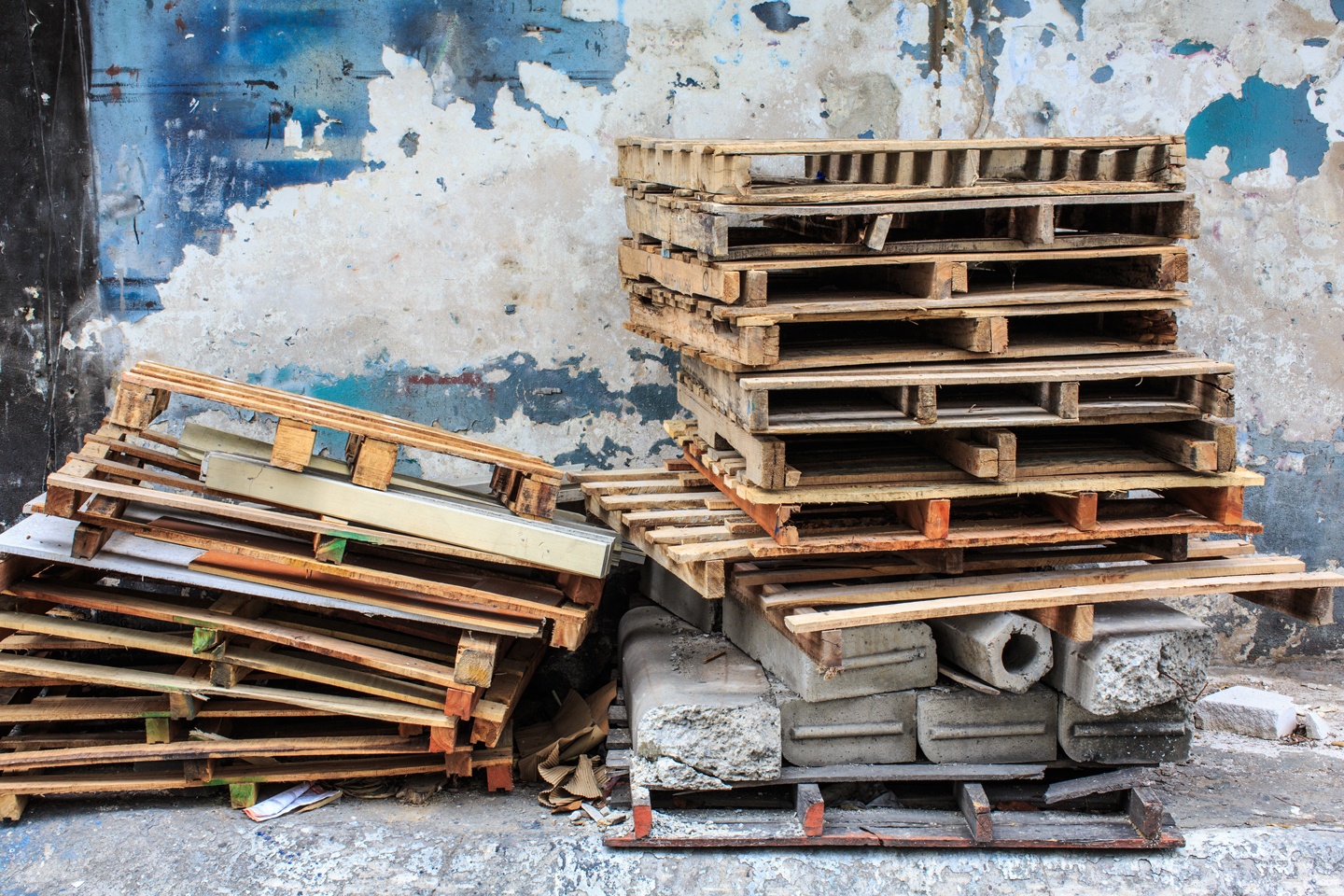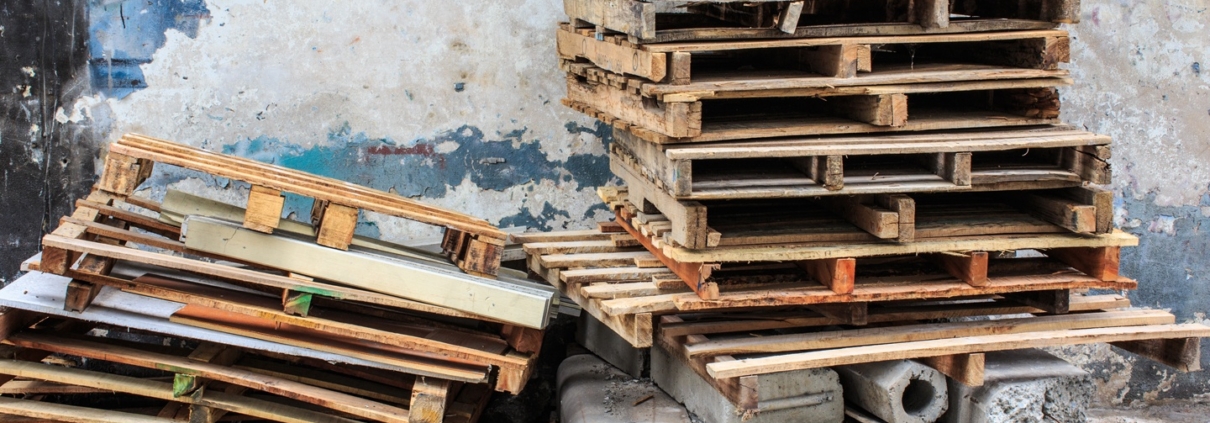How to Reduce the Hidden Cost of Damaged Pallets

While the cost of repairing a wood pallet or replacing it is obvious, there are hidden costs to damaged pallets as well. When companies perform a root cause analysis to identify the source of a problem, they often trace back issues such as workers comp. claims, product or equipment damage, and production disruptions to damaged pallets.
The following are some basic steps to keep damaged pallets from becoming an obstacle to a company’s supply chain success.
Wood Pallet Design
By investing in a more durable pallet, you can avoid the frequency of repair. Experts recommend inexpensive improvements such as adding more/better quality fasteners. While nails account for 5% of a pallet’s cost, they can impact 50% of the pallet’s durability.
Another way to help make your pallets more robust is to pay attention to the boards on the leading edges of the top deck (the lead boards). Two butted 6-inch hardwood lead boards on each end can keep your pallets sound and in service for much longer.
Wood Pallet Selection
Work with your pallet supplier to ensure you have the best pallet to meet your needs. For example, if you have a cramped production shop or loading dock and are required to pinwheel pallets, using a block pallet will let your forklift drivers move them without causing stringer damage.
Likewise, pallets not designed to safely rack the weight of your load can result in failure. By using Pallet Design System™ (PDS), your pallet supplier can provide you with the right pallet to optimize your process.
Wood Pallet Inspection and Segregation
It goes without saying that damaged pallets should not be loaded with product. Integrate pallet quality into your quality assurance process. Establish a procedure for segregating damaged pallets so they can be returned or sent out for repair.
Also, ensure your company has an effective process for managing and eliminating damaged or non-compliant pallets entering your facility under load, or returning empty and damaged from trading partners.
Wood Pallet Handling Best Practices
A lot of pallet damage is caused by incorrect handling. Employee training and ongoing supervision to prevent handling mistakes is critical to minimizing it. Do’s and don’t’s of pallet handling include the following:
- Do not bulldoze pallets over a concrete floor with a forklift. Bulldozing might seem like a productive way to move more product in less time, but it can damage the pallets, the floor, and even the lift truck. Bulldozing can even be an OSHA violation if the equipment operator has restricted visibility or the loads are unstable and there may be pedestrians present.
- Take care when entering or exiting from pallets with material handling equipment. A 10,000 lbs. forklift versus a 50 lbs. pallet is not exactly a fair fight. Forklift operators should slow down before entering a pallet. Impact can loosen or break lead boards. Incorrect tine placement can also cause damage. Be sure to enter the openings cleanly, avoiding contact with blocks or stringers. Forklift tines should be horizontal.
- Likewise, be sure to fully enter the pallet. Incorrectly positioned “walkies” or electric motor hand trucks can result in bottom deck board damage, while “short forking”, the practice of only placing forks part way under a load before lifting it, can result in top deck damage as well as load instability. Also, avoid “humping” unit loads together, the practice of lowering the load after contact has been made. Ensure to lower the load immediately before contact.
- Pay attention to pallet stacking and manual handling. Stack pallets squarely so that they will not catch on other loads and fall over. Avoid standing pallets on edge, as they can easily fall over, causing damage to pallets and creating the risk of injury.
- Avoid standing on a pallet. While a pallet may be rated to hold 2,000 lbs. uniformly distributed across its top surface, the pressure of a person’s foot on a single board can cause it to snap. Pallets are not designed to support people.
Repairing pallets and purchasing new ones can seem expensive, but below the surface, pallet damage might be linked to workplace injuries, product damage, or costly production stoppages in your facility. By following the steps listed above, you can help eliminate the hidden cost of damaged pallets.




